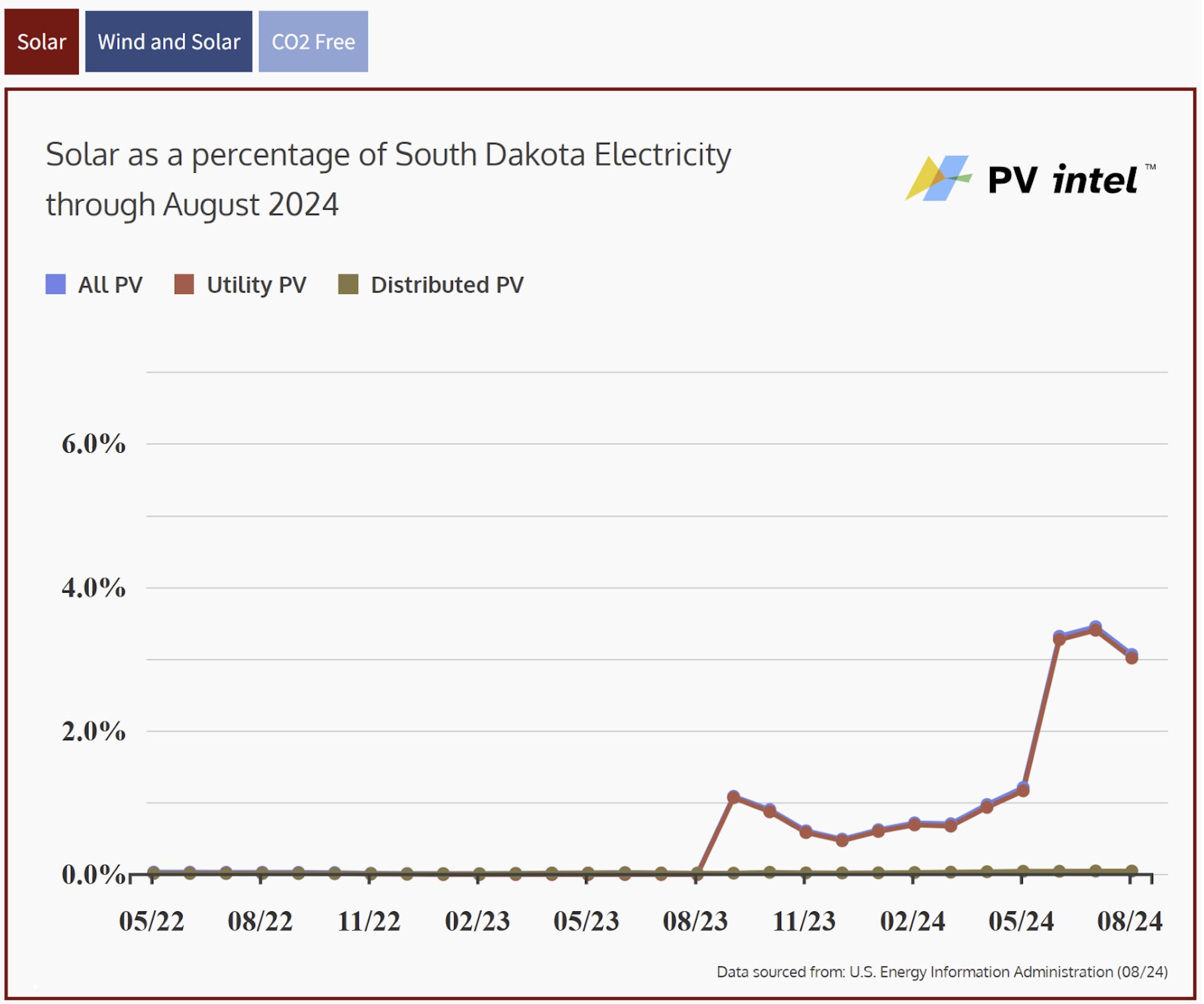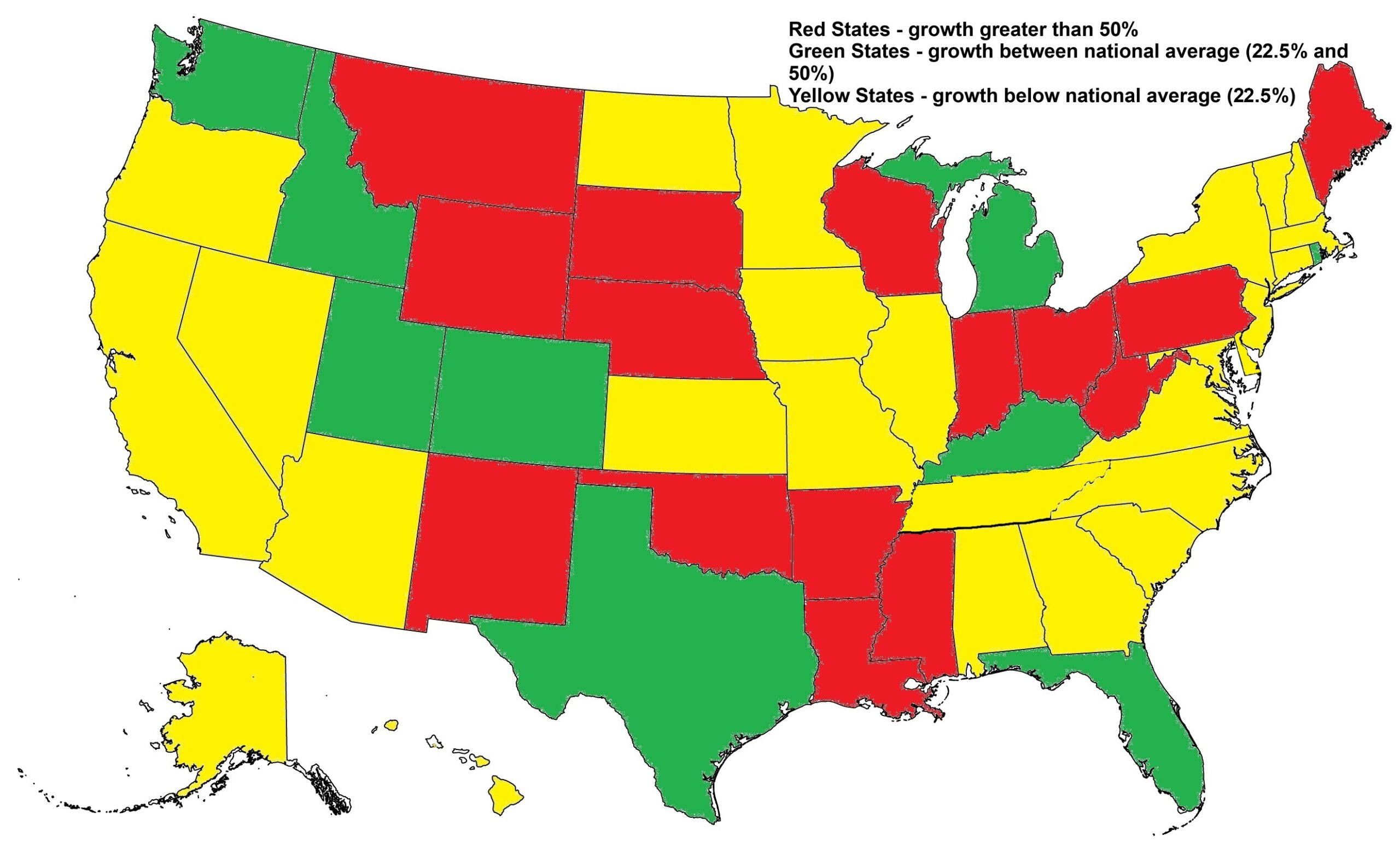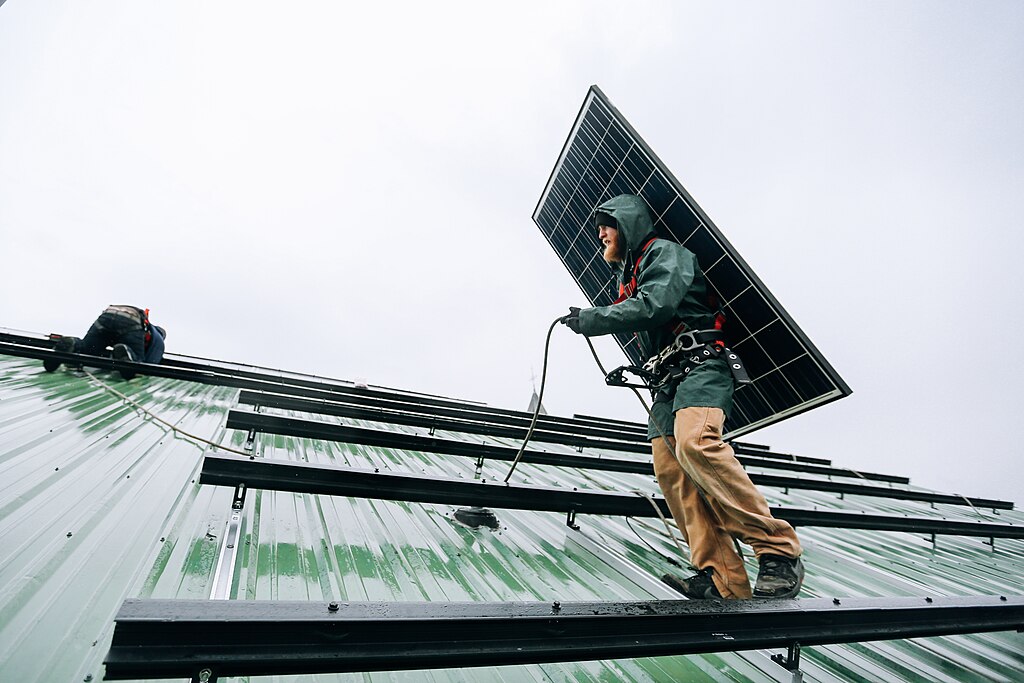Solar power electricity generation in the U.S. increased 17.5% in 2023 compared to 2022, accounting for 5.5% of all electricity. The momentum has continued in 2024, with solar up 22.5% year-over-year as of September, reaching 6.63% of all electricity over the past twelve months. Within this national growth, 15 states saw their solar generation increase by more than 50%, with many of these states having historically lagged in solar development.
According to data from the U.S. Department of Energy’s Energy Information Administration (EIA), refined by PV Intel, the following 15 states have surpassed 50% growth in solar generation over the past year:
- South Dakota – 7067%
- West Virginia – 347%
- Ohio – 126%
- Arkansas – 116%
- Montana – 103%
- Oklahoma – 96%
- Louisiana – 93%
- Wyoming – 88%
- Mississippi – 84%
- Wisconsin – 74%
- New Mexico – 60%
- Nebraska – 58%
- Maine – 57%
- Indiana – 57%
- Pennsylvania – 52%
South Dakota leads the pack with an extraordinary 7,067% increase, driven by its first two utility-scale solar facilities. The state’s solar generation jumped from virtually nothing, with only a single 1 MW project, to a significant presence with new installations contributing measurable power to the grid.

A couple of rough geographic patterns emerge in the map below, which categorizes states based on solar growth over the past twelve months. States with growth exceeding 50% are shown in red, those with growth between the national average of 22.5% and 50% appear in green, and states with below-average growth are marked in yellow.
One noticeable trend is that states with higher growth rates tend to cluster geographically, forming multiple pockets of rapid solar expansion across the country. In contrast, slower-growing states are more prominent along the coasts, with a few exceptions. Additionally, parts of the Midwest wind belt show below-average solar growth.
Many of the high-growth states are expanding from a low baseline, with most starting as “solar laggards.” These states previously had minimal solar capacity, so even modest additions represent substantial percentage increases. In fact, all but two of these high-growth states still have total solar generation well below the national average of 6% of electricity from solar. Conversely, many of the slower-growth states are expanding from higher existing volumes of solar power, which naturally leads to lower percentage growth rates despite significant absolute contributions.
However, two exceptions stand out: Maine and New Mexico. Unlike the others, these states now derive more than 10% of their electricity from solar, positioning them as leaders in solar adoption.

The absolute volume of solar deployment is increasing nationwide. States previously lagging are catching up, while established solar leaders continue growing, albeit more slowly. Leading solar states like California, Nevada, Hawaii, and Massachusetts are among the 24 states that grew below the national average, reflecting their already high levels of solar adoption. Conversely, this group also includes states such as Alaska, Alabama, Kansas, and North Dakota, where solar accounts for less than 1% of electricity generation.
This content is protected by copyright and may not be reused. If you want to cooperate with us and would like to reuse some of our content, please contact: editors@pv-magazine.com.








By submitting this form you agree to pv magazine using your data for the purposes of publishing your comment.
Your personal data will only be disclosed or otherwise transmitted to third parties for the purposes of spam filtering or if this is necessary for technical maintenance of the website. Any other transfer to third parties will not take place unless this is justified on the basis of applicable data protection regulations or if pv magazine is legally obliged to do so.
You may revoke this consent at any time with effect for the future, in which case your personal data will be deleted immediately. Otherwise, your data will be deleted if pv magazine has processed your request or the purpose of data storage is fulfilled.
Further information on data privacy can be found in our Data Protection Policy.